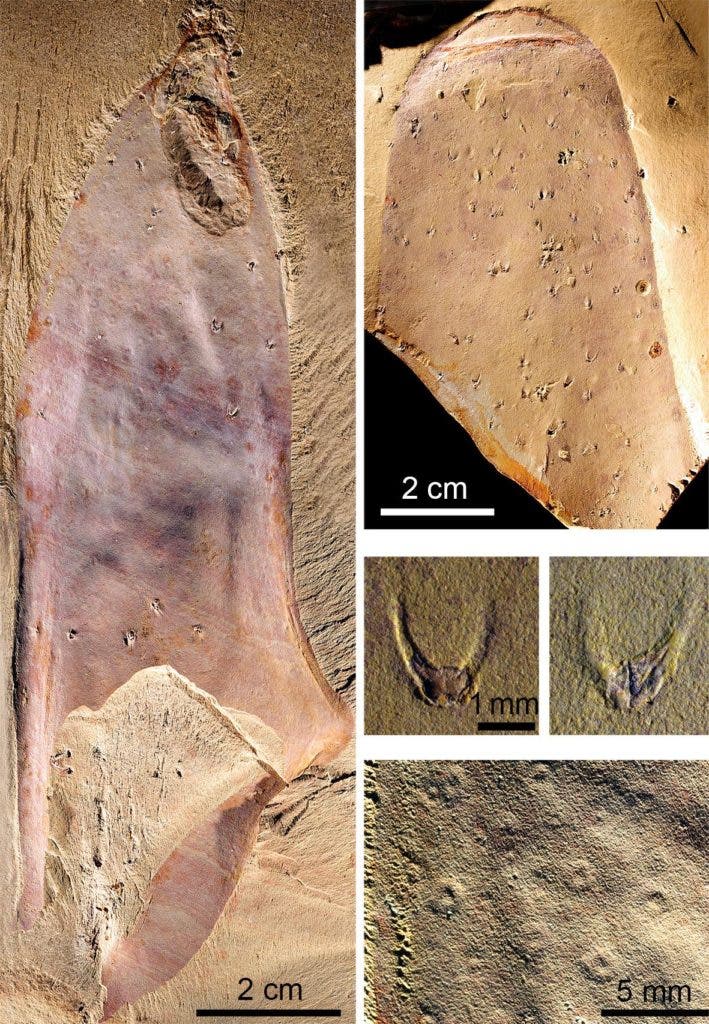Scientists have discovered the unusual creature in Cambrian rocks, and they’re not exactly sure where it fits in the tree of life.

Before the Cambrian, life on Earth was rather dull. Mostly microscopic, simple, and bland. But that all changed during the Cambrian Explosion — a period of intense evolutionary diversification, where most major animal phyla appeared in the fossil record. The Cambrian Explosion also made way for some incredibly bizarre creatures to emerge, like Hallucigenia — a worm-like tubular organism with seven or eight pairs of slender legs, each terminating in a pair of claws, and long spines on its body. Now, researchers have found yet another unusual Cambrian creature: a large-bodied ‘nude’ sea-creature belonging to the mysterious groups of animals known as the chancelloriids.
Classifying chancelloriids is a difficult task. Some paleontologists see them as sponges, based on their simple structure and immobile lifestyle. Others believe they were more advanced, or at least that they developed from advanced ancestors, a theory backed by the chancelloriids’ skins, which appear to be much more complex than those of any sponge we’ve seen. It’s also been suggested that chancelloriids were related to the “chain mail” armored slugs of the Cambrian. The new discovery by a team of scientists from the University of Leicester, the University of Oxford and Yunnan University, China, adds new evidence that could help solve the mystery.

The new species, named Allonnia nuda, was discovered in the Chengjiang deposits of Yunnan Province, China. It was surprisingly large compared to its relatives (measuring 50 cm or more), but had only a few tiny spines — hence the “naked” name. This unusual appearance suggests that other specimens might have been discovered before, but not properly identified, and might be hiding in plain sight in fossil collections.
The finding also shows that the group is more diverse than believed. Dr Tom Harvey, from the University of Leicester’s School of Geography, Geology and the Environment, explains:
“Fossil chancelloriids were first described around 100 years ago, but have resisted attempts to place them in the tree of life. We argue that their pattern of body growth supports a link to sponges, reinvigorating an old hypothesis. We’re not suggesting that it’s “case closed” for chancelloriids, but we hope our results will inspire new research into the nature of the earliest animals.”
Journal Reference: Cong, P.-Y., Harvey, T. H. P., Williams, M., Siveter, D. J., Siveter, D. J., Gabbott, S. E., Li, Y.-J., Wei, F., & Hou, X.-G. 2018 Naked chancelloriids from the lower Cambrian of China show evidence for sponge-type growth. Proceedings of the Royal Society B, 20180296. doi: 10.1098/rspb.2018.0296






